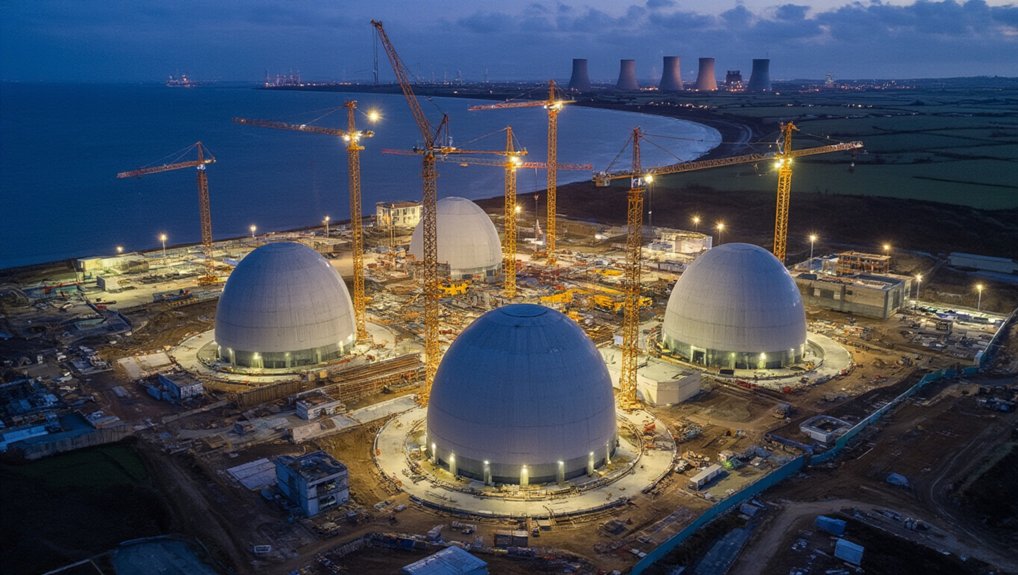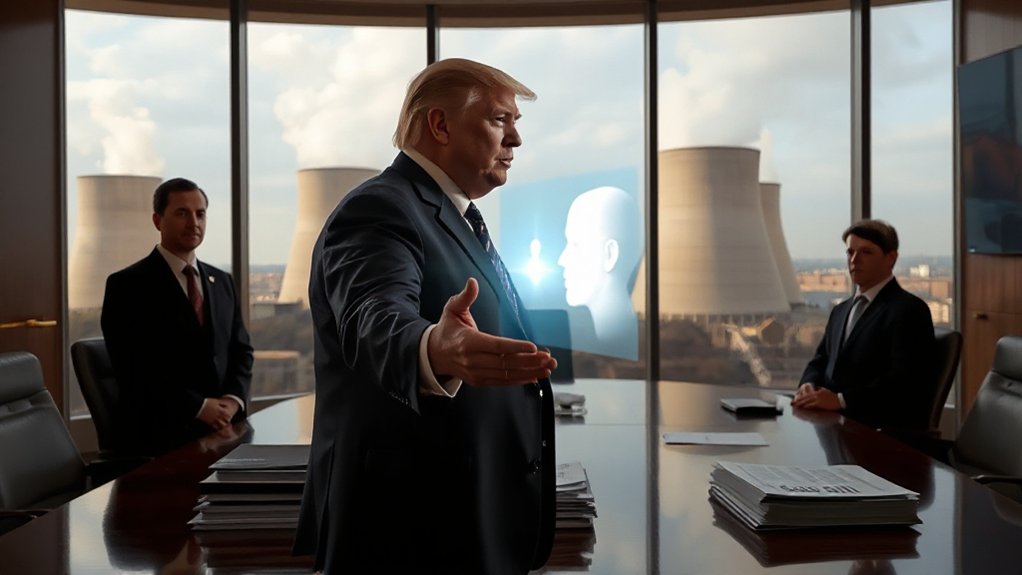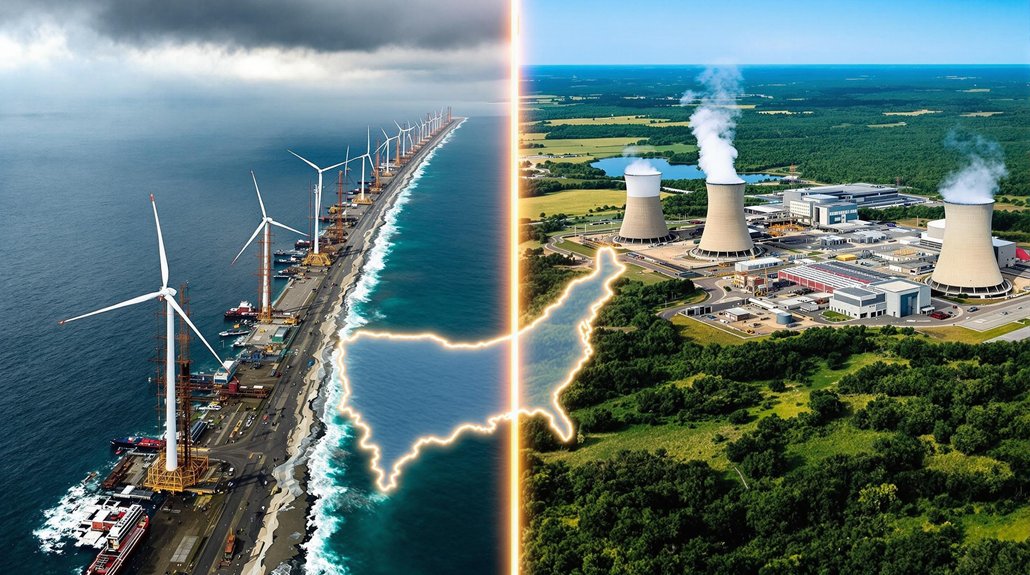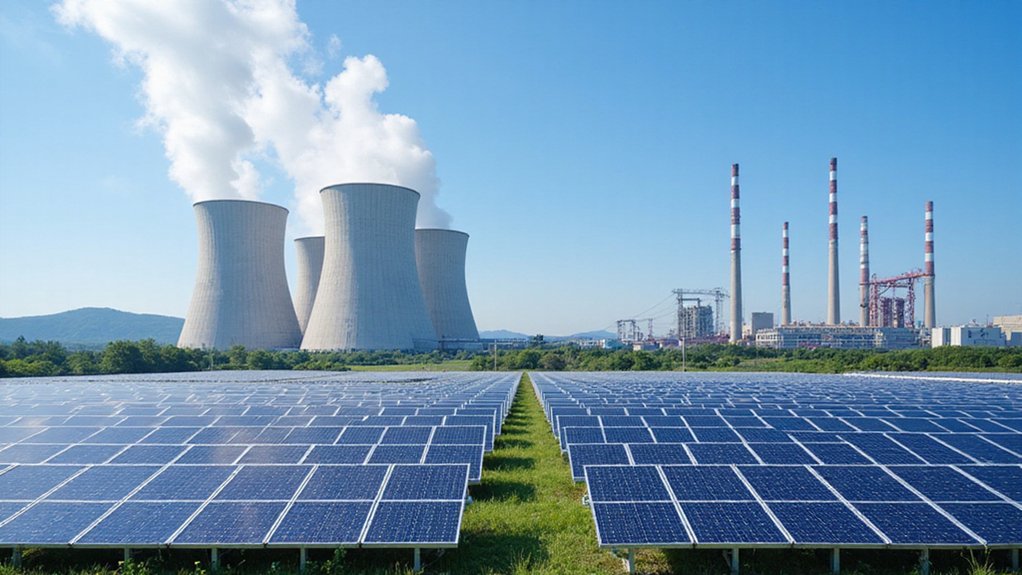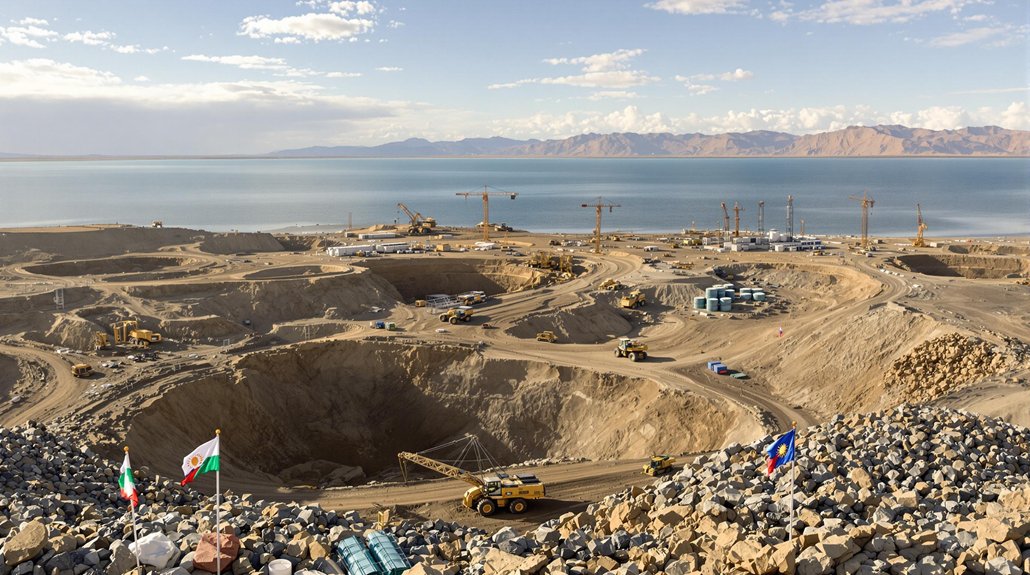Britain’s nuclear fleet is dying. Half the reactors shut down by 2025, yet the government wants to triple capacity to 24 GW by 2050. That’s quite the gamble. They’ve thrown £120 million at it, created Great British Nuclear, and pinned hopes on Hinkley Point C—the only plant actually being built. Meanwhile, 87,000 nuclear workers watch their workplaces prepare for retirement. The math doesn’t add up, and the clock keeps ticking on this billion-pound bet.
While Britain’s current nuclear plants chug toward retirement, the country finds itself in a peculiar spot. Most of the existing 6.5 GW capacity will be gone by decade’s end. Meanwhile, the government’s waving around plans for 24 GW of new nuclear by 2050. That’s quite the leap.
Britain’s aging nuclear fleet limps toward retirement while government dreams of tripling capacity by 2050.
The math doesn’t look great. Nuclear provides about 15% of Britain’s electricity now. Half that capacity vanishes by 2025. Only Hinkley Point C is actually being built. Without more plants, nuclear capacity in 2050 will be a third of today’s levels. Yet somehow, officials expect nuclear to provide 25% of electricity by then.
Russia’s Ukraine invasion lit a fire under British energy policy. The government announced a “major acceleration of homegrown power” strategy that puts nuclear front and center. They even created Great British Nuclear, because nothing says efficiency like another government body. They’re throwing £120 million at development through the Future Nuclear Enabling Fund. The financing challenge looms large, with ministers exploring the Regulated Asset Base model to reduce costs for future nuclear projects.
The nuclear workforce is booming, oddly enough. Employment jumped 35% between 2021 and 2024, hitting a record 87,000 workers. That’s a lot of people working on plants scheduled for the scrap heap. The market remains dominated by a few large companies requiring massive capital investments for construction and operation of nuclear facilities.
Britain faces a bind. The country legally must hit net zero emissions by 2050. The Climate Change Committee says 10GW of nuclear is necessary to complement renewables. Electricity generation needs to be carbon-free by 2035. Nuclear checks that box, but privatization made financing these megaprojects a nightmare. Like other Western nations, Britain’s projects face significant delays and cost overruns that average 2.5 times original estimates.
The UK’s energy independence evaporated years ago. Britain became a net importer of natural gas in 2004, crude oil in 2005. North Sea production peaked in 2000 and kept sliding. Natural gas and oil imports more than doubled from 2007 to 2017. Now they’re scrambling for new North Sea licenses while banking on nuclear’s revival.
Nuclear generation should hit 53.06 billion kWh in 2025, growing at a modest 0.73% annually. That’s not exactly explosive growth for a technology meant to rescue Britain’s energy future. The billion-pound gamble continues, retirement deadlines loom, and Hinkley Point C remains the lone construction site in a sea of ambitious blueprints.
References
- https://world-nuclear.org/information-library/country-profiles/countries-t-z/united-kingdom
- https://www.statista.com/outlook/io/energy/nuclear-power/united-kingdom
- https://cnpp.iaea.org/public/countries/GB/profile/highlights
- https://www.world-nuclear-news.org/articles/UK-nuclear-workforce-at-record-level
- https://lordslibrary.parliament.uk/nuclear-power-in-the-uk/
